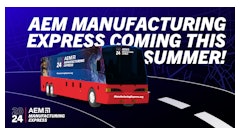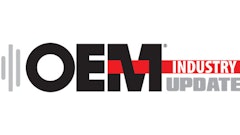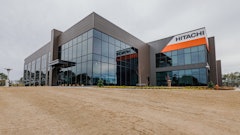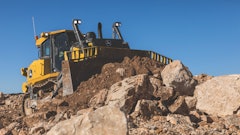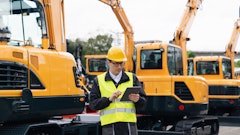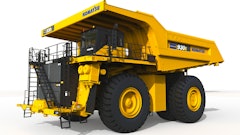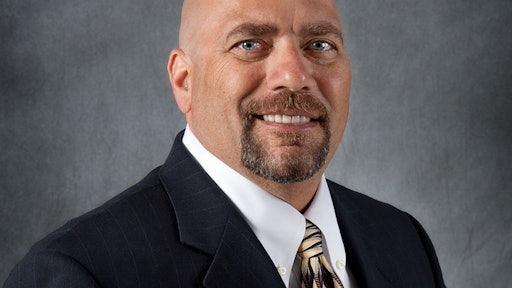
Automation Advancements & Smart Systems
How does your company contribute to autonomous systems development and success?
We’re very familiar with the implementation of autonomous technology in heavy equipment as our agricultural (CASE IH) and engine (Fiat Powertrain Technologies (FPT)) partner brands have already introduced concept autonomous tractor technology. Certain applications in the construction sector that are repetitive and take place in a closed circuit, or a specified work envelope, is where autonomous equipment might make sense. For the great majority of applications, however, the operator is still critical. Rather than automation which eliminates the operator, we have focused on automating and simplifying the most difficult and time-consuming elements of the work in a way that is scalable to their skill sets and operations. For instance, we recently introduced the CASE SiteControl CoPilot system for our dozer line that allows operators to set a desired slope or grade, and hold that slope or grade without masts, lasers or GPS. While that system is ideal for a first-time machine control user, it can be built upon with 3D system upgrades as owners’ needs evolve. Similarly, 2D excavation systems available for CASE equipment allow us to show small- to mid-sized businesses how easy machine control is to implement, and then expand their capability when they’re ready.
Managing the Data Trend
What value is this providing to your company and customers?
Data — and who owns it or has the right to access it — continues to be an interesting topic. At CASE, we believe that data belongs to the customer. Manufacturers, equipment dealers and customers can achieve their collective best results when there is an agreement on how to share that data for the greater good. As an OEM, we use that data to achieve insight into how equipment runs and as foundational intelligence for product development. It alters the interaction between equipment dealers and customers from transactional to relational, where dealers can provide better service and counsel because they have a better understanding of how the equipment operates. This is particularly beneficial with small- to mid-sized contractors who may not employ a dedicated fleet manager or maintenance tech on staff. In this case, the dealer becomes the de facto fleet manager and takes that obligation off of the business owner so that the business owner can focus on growing the business.
Where do you see data leading the industry? What is its potential?
You don’t know what you don’t know, and the continued evolution of data has made contractors much more intelligent/aware of how their equipment is performing and operating. As an industry, we simply need to be smart about data capture and interpretation. For example, what’s the right data that is most actionable and meaningful for all parties? Capturing a lot of data can be paralyzing unless you leverage what matters to improve the product or a customer’s operation. That’s our focus — providing the right data that makes us smarter about building better products and allows business owners to make smart decisions about their operation.
Challenges & Opportunities
What new challenges have arisen that effect the way you design or manufacture your product?
We are firmly grounded in practical innovation. We believe that each product is a platform that allows our customers to add or expand a service or competency to their business. We don’t sell them a machine — we provide them capability. From that base of capability, we can scale them up with features and technology from advanced to simple, and counsel them along the way on how each new feature or capability will optimize their business.
Has the rate of technological advancement had any impact on business decisions, development, or product performance and client expectations?
We have been very deliberate in how we’ve expanded technology and data into our product offering, knowing that there is still an intimidation factor for some contractors. Our objective is to keep it simple and make it scalable. Our partnership with Leica Geosystems, for instance, is anchored in the concept of scaling solutions based on the size and type of business, as well as the contractor’s comfort level and technological aptitude. Will there be an operation ready immediately for the most advanced 3D machine control offering? Absolutely, and we can provide that. But for every early adopter, there are a few more who will benefit from starting with a basic 2D system, and then building on it to expand to 3D systems. That evolution is evident in our product development and customers’ expectations from CASE.
What is your company’s opportunity to impact the marketplace with a unique product, capability or offering?
Our impact in the market is dedicated to the premise that innovation does not necessarily have to be defined within the context of technology. Often, the most useful innovations in business are those that improve technology that already exists. Let’s face it, contractors – big or small – don’t want to be the guinea pigs of manufacturers’ technological advancements. To that end, we introduced Project Minotaur at CONEXPO this past March. It’s the first ever purpose-built compact dozer loader, and much like our introduction of the backhoe in 1957, it’s a crossover that creates a brand new product category in the industry. And based on social media engagement, press coverage and feedback from customers, it was one of the most talked about introductions at the show.
As we enter our 175th year in business, Project Minotaur epitomizes how we approach innovation. It’s all about being pragmatic, not just introducing bleeding edge technology. We run product development decisions through that pragmatic filter: is it something that contractors can use to improve their operation? Is it worth investing their hard earned dollars? In the case of Minotaur, it provides multi-functional capabilities in a footprint that will make it more accessible to a wider spectrum of users and industries. And while it was a “concept” at the show, it’s something we continue to refine and push towards market availability.



